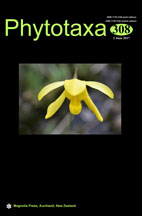Abstract
Sri Lanka is a country with unique landscapes and positioning. Its land profile varies from coastal areas through lowland hills to central montane region, and the climatic zones governed by seasonal monsoons results in a significantly high biodiversity.
Sri Lanka together with Western Ghats is a biodiversity hot spot among the 35 regions known worldwide. Sri Lanka harbors 3154 species of which 894 are endemics belonging to different angiosperm families. The orchid flora of the country, with 189 known species including 55 endemics is one that contributes very much for this high endemism. However 70.6% are currently listed as nationally threatened species during National Red listing in 2012.
The present study was conducted to investigate the current status and occurrence of species of the family Orchidaceae within and outside the conservation areas including few unexplored/ undocumented regions in the country. Field visits were carried out mainly focusing on the flowering seasons. Fourteen different sites including Forest Reserves, Sanctuaries, Strict Nature Reserves and Wildlife Parks were taken into consideration during this study. Observations were made in the field and locations recorded, collected data were tabulated and compared with available information. The observation made during the present study would make a large contribution for updating the conservation status of orchids at national and global level red listing.

